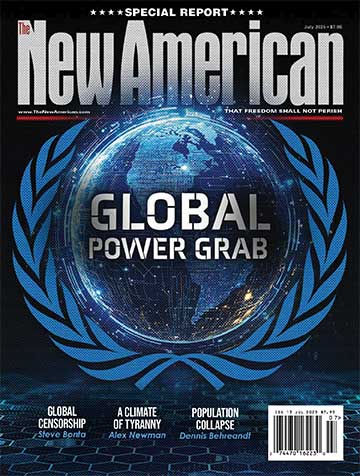
It’s a sign of the times that people espousing traditional morality are now called rebels, or, maybe, reactionary. The Boy Scouts, for instance, went from mainstream to maligned to, after their moral collapse, part of the cultural effluent stream. Yet as risibility becomes de rigueur, traditionalism can become trendy. Hence the rise of a counter-cultural group that’s young, hip, intellectual — and traditionally Catholic — and alarming to the Left.
First Things senior editor Julia Yost wrote about this in a Tuesday New York Times guest essay titled “New York’s Hottest Club Is the Catholic Church.” As she explains:
As senior churchmen seek to make Catholicism palatable to modernity, members of a small but significant scene are turning to the ancient faith in defiance of liberal pieties. The scene is often associated with “Dimes Square,” a downtown Manhattan neighborhood popular with a pandemic-weary Generation Z — or Zoomer — crowd, but it has spread across a network of podcasts and upstart publications. Its sensibility is more transgressive than progressive. Many of its denizens profess to be apolitical. Others hold outré opinions, whether sincerely or as fashion statements. Reactionary motifs are chic: Trump hats and “tradwife” frocks, monarchist and anti-feminist sentiments. Perhaps the ultimate expression of this contrarian aesthetic is its embrace of Catholicism.
Urban trends can shape a culture, as millennial Brooklyn did in its heyday. The Dimes Square scene is small, but its ascent highlights a culture-wide shift. Progressive morality, formulated in response to the remnants of America’s Christian culture, was once a vanguard. By 2020, the year of lockdowns and Black Lives Matter protests, progressivism had come to feel hegemonic in the social spaces occupied by young urban intellectuals. Traditional morality acquired a transgressive glamour. Disaffection with the progressive moral majority — combined with Catholicism’s historic ability to accommodate cultural subversion — has produced an in-your-face style of traditionalism. This is not your grandmother’s church — and whether the new faithful are performing an act of theater or not, they have the chance to revitalize the church for young, educated Americans.
As the last line indicates, there’s speculation about whether this movement’s impetus is genuine faith or merely genuine rebelliousness against the now leftist status quo. (In reality, it’s no doubt both, as each motivation can surely be found in certain members — and sometimes both in a given member {people are complex}.) What requires no speculation, just eyes, is that the young tradCaths are alarming some liberals, undoubtedly because they represent a perceived threat to leftist cultural dominance.
A good example is a Thursday Slate piece in which the author, Molly Olmstead, complains that the Times is treating “Catholic Reactionaries as a Fun Sexy Trend Story.” Olmstead’s commentary is notable for its falsehoods and fallacies, and implications thereof, numerous enough to make addressing them all impossible given space constraints. But let’s examine a few.
Note, first, that a “reactionary” is defined thus: “(of a person or a set of views) opposing political or social liberalization or reform.” In other words, if by “Catholic reactionaries” Olmstead means people who oppose our decadent, woke culture and who happen to be Catholic, the description is accurate, though tendentiously negative in connotation. If, however, she’s implying that they’re reactionary vis-à-vis Catholic teaching, she should note that there’s a perhaps more elucidative description of these trads: “orthodox.”
For while Olmstead claims that they “look back to an imagined pre-modern church,” it’s perhaps truer that she looks to an imagined post-modern church. She cites Pope Francis’s agitation against orthodoxy (aka the “trad” movement) as proof of its illegitimate or, at least, anachronistic, nature. Yet this reflects a typical misunderstanding journalists display when reporting on the Catholic Church:
Just as not every desire expressed by Nancy Pelosi or Chuck Schumer reflects U.S. law, not every verbalized notion of a pope reflects Church teaching.
And as with U.S. law, one can have an opinion on Catholic teaching, but what Catholic teaching is isn’t opinion (though, as with U.S. law, many like to pretend it is for spin purposes): It’s all in official documents — which anyone, even a Slate journalist — can read for himself.
If Olmstead understood this, and what these teachings dictate, she wouldn’t have written the following in an effort to portray the orthodox “tradCaths” as just another flavor of the day: “There are so many other forms of Catholicism operating in the city, with far greater numbers: Immigrant groups, socialist worker groups, old-fashioned Italian and Irish cradle Catholics.”
Of course, “immigrant” and Irish and Italian “cradle Catholics” aren’t “other forms of Catholicism”; they’re sub-groups of Catholics who, on average, adhere to varying degrees to the Catholic form. Nor is “socialist” an acceptable modifier for “Catholic” for a simple reason: The Church has repeatedly and explicitly condemned socialism.
For example, Pope Pius XI wrote in the 1931 encyclical (the highest-order Vatican document) Quadragesimo Anno, “Religious socialism, Christian socialism, are contradictory terms; no one can be at the same time a good Catholic and a true Socialist.” That is definitive.
Even more fundamentally errant, Olmstead speaks of “conservative Catholics” dealing with this “tumultuous and confusing time” by embracing “black-and-white morality,” as if it’s also a flavor of the day. But morality by definition is black and white. If it’s gray — or “relative” — it’s not morality but is called something else: preference. (Click here and here for elaboration.)
In the same vein, Olmstead writes, “Scholars will tell you there are many ways to live out any religion.” Yes, the generic “scholars” (the same kind of people telling us a boy can become a girl just by willing it). It all reflects the spirit of the age, the woolly-headed relativism that gives us designer religion — tailored to fit, of course, around whatever vices please the perhaps perdition-bent palate.
Yet one could wonder: If it’s all relative, can you be a Christian and worship Satan or encourage hate and not love? Don’t impose your values now, oh tolerant ones. Maybe “identifying” as Catholic and a few cross-faith hormones is all it takes.




